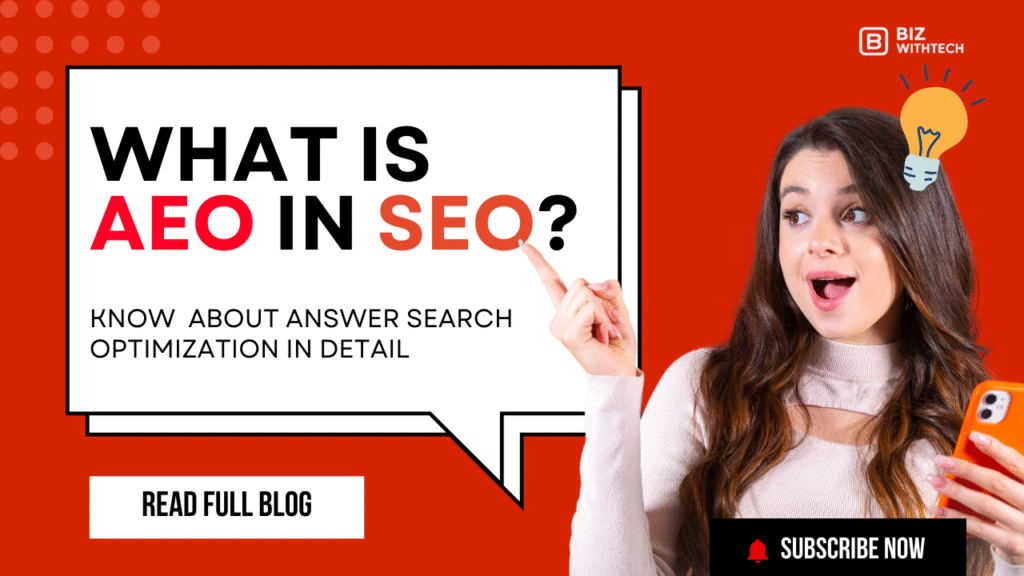In the competitive world of digital marketing, getting your website to rank on the first page of search engine results can feel like an uphill battle. While there are many factors that influence your website’s visibility, on-page SEO remains one of the most controllable and impactful strategies you can implement. But what exactly is on-page SEO, and why does it matter so much for your digital marketing success?
Understanding On-Page SEO:
On-page SEO, also known as on-site SEO, refers to the practice of optimizing individual web pages to rank higher in search engines and earn more relevant traffic. Unlike off-page SEO, which focuses on external signals like backlinks, on-page SEO is entirely within your control. It encompasses all the measures you can take directly within your website to improve its position in search rankings.
At its core, on-page SEO is about making your content as clear and valuable as possible—not just for search engines, but more importantly, for your human visitors. When done correctly, it creates a win-win situation: search engines can easily understand and index your content, while users find exactly what they’re looking for.
Why On-Page SEO Matters in Digital Marketing?
Think of on-page SEO as the foundation of your digital marketing house. Without a solid foundation, even the best off-page SEO efforts will struggle to deliver results. Here’s why it’s crucial:
Search engines are smarter than ever. Google’s algorithms have evolved to prioritize user experience and content quality. On-page SEO helps you align with these priorities, signaling to search engines that your content deserves to rank.
It improves user experience. Good on-page SEO isn’t just about pleasing algorithms—it’s about creating a better experience for your visitors. Fast-loading pages, mobile-friendly designs, and well-structured content keep users engaged and coming back.
You have complete control. Unlike building backlinks or managing your online reputation, on-page SEO is entirely in your hands. You can make changes immediately and see results relatively quickly.
It compounds over time. Well-optimized pages continue to attract organic traffic month after month, year after year, providing long-term value without ongoing advertising costs.
Key Elements of On-Page SEO:
Let’s dive into the essential components that make up a comprehensive on-page SEO strategy:
1. Title Tags
Your title tag is the clickable headline that appears in search results. It’s one of the most important on-page SEO elements because it tells both users and search engines what your page is about.
Best practices for title tags:
- Keep them under 60 characters to avoid truncation in search results
- Include your primary keyword near the beginning
- Make them compelling and click-worthy
- Ensure each page has a unique title tag
- Accurately reflect the page’s content
2. Meta Descriptions
While meta descriptions don’t directly impact rankings, they significantly influence click-through rates. This 155-160 character snippet appears below your title in search results and serves as your page’s elevator pitch.
A well-crafted meta description should summarize your content, include relevant keywords naturally, and entice users to click through to your page. Think of it as ad copy for organic search results.
3. Header Tags (H1, H2, H3, etc.)
Header tags structure your content hierarchically, making it easier for both readers and search engines to understand your page’s organization. Your H1 tag should contain your main topic and appear only once per page. H2s break down major sections, while H3s and beyond handle subsections.
Proper header structure improves readability dramatically. Users can scan your content quickly to find the information they need, while search engines can better understand the relationships between different topics on your page.
4. Content Quality and Optimization
Content is king in the world of SEO, but not just any content—it needs to be high-quality, relevant, and optimized. Here’s what that means:
Comprehensive coverage. Your content should thoroughly address the user’s search intent. If someone searches for “how to bake sourdough bread,” they expect detailed, step-by-step instructions, not a brief overview.
Keyword optimization. Include your target keywords naturally throughout your content, especially in the first 100 words. However, avoid keyword stuffing—focus on writing for humans first, search engines second.
Length matters. While there’s no magic word count, longer, more comprehensive content tends to rank better. Aim for depth over length, ensuring every word adds value.
Freshness. Regularly updated content signals to search engines that your site is active and relevant. Consider updating older posts with new information and examples.
5. URL Structure
Clean, descriptive URLs help both users and search engines understand your page’s content before even visiting it. A good URL is short, includes your target keyword, and uses hyphens to separate words.
Compare these two URLs:
yoursite.com/p=12345?ref=homepageyoursite.com/on-page-seo-guide
The second is clearly superior—it’s readable, descriptive, and SEO-friendly.
6. Internal Linking
Internal links connect your content together, helping search engines discover new pages and understand your site’s structure. They also keep visitors engaged by guiding them to related content.
Strategic internal linking distributes page authority throughout your site, potentially boosting rankings for important pages. When adding internal links, use descriptive anchor text that tells users and search engines what they’ll find when they click.
7. Image Optimization
Images make your content more engaging, but they need proper optimization to contribute to SEO:
File names. Use descriptive, keyword-rich file names instead of generic ones like “IMG_12345.jpg.”
Alt text. This describes your image for accessibility and helps search engines understand visual content. Write clear, concise descriptions that include relevant keywords naturally.
File size. Compress images to reduce loading times without sacrificing quality. Large images are one of the biggest culprits behind slow page speeds.
Responsive images. Ensure images scale properly on different devices for optimal mobile experience.
8. Page Speed and Core Web Vitals
Page speed has been a ranking factor for years, and Google’s Core Web Vitals have made it even more critical. These metrics measure loading performance, interactivity, and visual stability.
Users are impatient—studies show that a one-second delay in page load time can reduce conversions by 7%. To improve page speed, minimize HTTP requests, enable browser caching, use a content delivery network (CDN), and optimize your code.
9. Mobile-Friendliness
With mobile-first indexing, Google predominantly uses the mobile version of your content for ranking. Your site must provide an excellent experience on smartphones and tablets.
Responsive design, readable text without zooming, adequate spacing between clickable elements, and fast mobile load times are all essential. Test your site regularly on various devices to ensure consistent performance.
10. Schema Markup
Schema markup is structured data that helps search engines understand your content’s context. While it doesn’t directly boost rankings, it can enhance your search listings with rich snippets—those eye-catching elements like star ratings, recipe cards, or FAQ sections that appear in search results.
Rich snippets increase visibility and click-through rates, giving you a competitive edge in search results.
On-Page SEO Best Practices
To maximize your on-page SEO efforts, follow these proven practices:
Focus on user intent. Understand what users are really looking for when they search for your target keywords. Are they looking to buy, learn, or find a specific website? Match your content to their intent.
Create unique content. Duplicate content confuses search engines and dilutes your ranking potential. Every page should offer unique value and target distinct keywords.
Optimize for featured snippets. Structure your content to answer common questions concisely. Use bullet points, numbered lists, and clear definitions to increase your chances of appearing in position zero.
Improve readability. Use short paragraphs, simple language, and plenty of white space. Tools like the Flesch Reading Ease score can help you gauge readability.
Implement breadcrumb navigation. Breadcrumbs help users understand their location on your site and provide additional internal linking opportunities.
Use multimedia. Incorporate videos, infographics, and interactive elements to increase engagement and time on page—both positive signals to search engines.
Optimize for voice search. With the rise of voice assistants, optimize for conversational, long-tail keywords and question-based queries.
👉 Want to learn on-page SEO step by step? Watch our detailed video tutorial to master every element easily and effectively.
Common On-Page SEO Mistakes to Avoid
Even experienced marketers can fall into these traps:
Keyword stuffing. Overusing keywords makes content unreadable and can trigger penalties. Write naturally and focus on semantic variations of your keywords.
Neglecting technical SEO. Broken links, 404 errors, and redirect chains can undermine your on-page efforts. Regular site audits are essential.
Ignoring search intent. Ranking for a keyword is pointless if your content doesn’t match what users actually want. High bounce rates will eventually hurt your rankings.
Thin content. Pages with minimal, low-value content rarely rank well. Provide substantial information that thoroughly addresses the topic.
Over-optimization. Yes, there’s such a thing as too much SEO. Over-optimized content looks spammy and provides a poor user experience.
Measuring On-Page SEO Success
Track these metrics to gauge your on-page SEO performance:
- Organic traffic: Monitor increases in visitors from search engines
- Keyword rankings: Track where your target keywords rank over time
- Click-through rate (CTR): Measure how often people click your listings in search results
- Bounce rate: High bounce rates may indicate your content doesn’t match user intent
- Time on page: Longer sessions suggest engaging, valuable content
- Conversion rate: Ultimately, SEO should drive business results
Use tools like Google Analytics, Google Search Console, and SEO platforms to monitor these metrics and identify improvement opportunities.
The Future of On-Page SEO
As search engines continue to evolve, on-page SEO adapts with them. Artificial intelligence and machine learning are making algorithms smarter at understanding context, user intent, and content quality. The emphasis is increasingly on expertise, authoritativeness, and trustworthiness (E-A-T), especially for topics that impact people’s health, finances, or well-being.
Video content is becoming more important, with platforms like YouTube serving as the second-largest search engine. Interactive content and user-generated elements may also play larger roles in future ranking algorithms.
Despite these changes, the fundamental principles remain constant: create high-quality content that serves your audience’s needs, make it easy for search engines to understand, and provide an excellent user experience.
Conclusion
On-page SEO is the cornerstone of any successful digital marketing strategy. While it requires ongoing effort and attention to detail, the rewards are substantial—increased visibility, more qualified traffic, and better conversion rates, all without paying for ads.
Remember that on-page SEO isn’t a one-time task but an ongoing process. Search engine algorithms evolve, user behavior changes, and competitors adapt. Stay informed about best practices, regularly audit your pages, and always prioritize your users’ needs above all else.
By mastering on-page SEO, you’re not just optimizing for search engines—you’re building a better, more valuable web presence that serves your audience and drives your business forward. Start implementing these strategies today, and watch your digital marketing efforts reach new heights.




